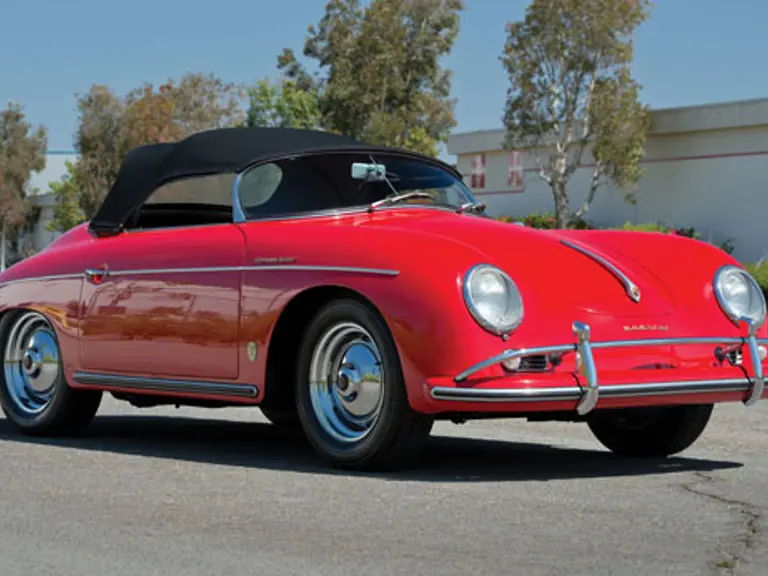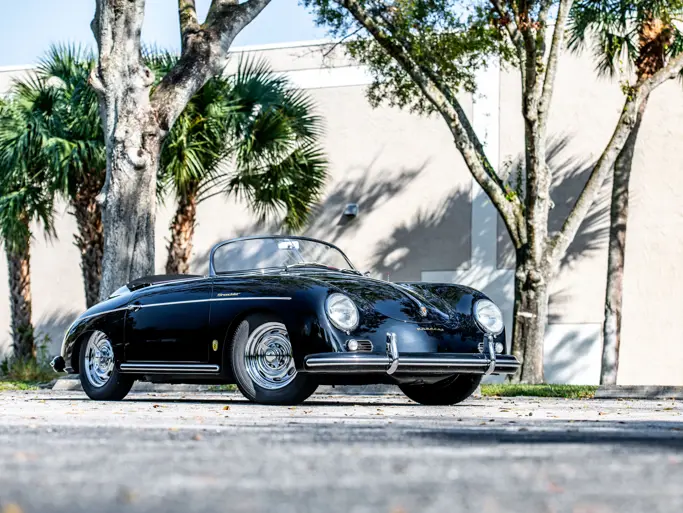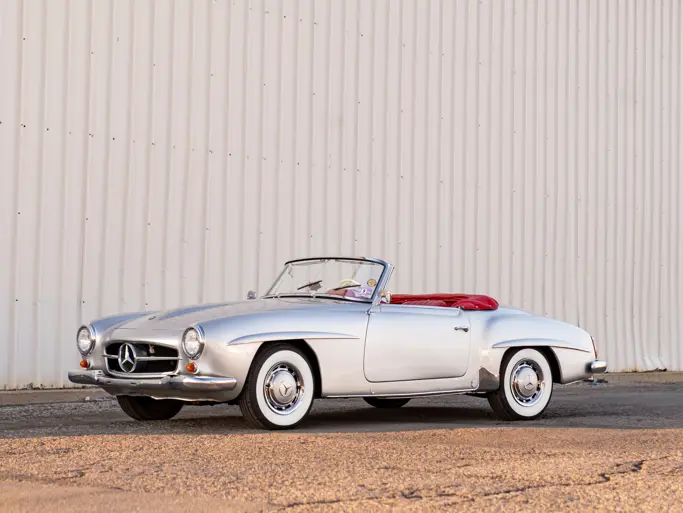Through the influence and persistence of legendary European automobile importer Max Hoffman, the iconic Porsche 356 Speedster hit the American roads in 1954, forever changing the Porsche brand both in the U.S. and around the world. Hoffman knew the U.S. market well and knew that the sub $3,000, minimalistic, racing focused Speedster, was exactly what thousands of customers craved and desired. Compared to the 356A Coupe, the Speedster was 200 pounds lighter, and one second faster to 60-mph. According to sources, 4,147 left the factory and were produced through 1959.
In late of 1957, improvements were made to the Speedster model, including a larger rear window, 1,600-cc engine, exhaust exiting through the rear bumpers, a high bow canvas top, teardrop taillights, improved carburetion and ZF steering gear. Known specifically as the T2 variant, this marked the final production run of the Speedster prior to the Convertible D of 1959. The T2 Speedster is the rarest version of the body style, Porsche having only made 1,171 of them from 1957-1959.
The current owner of this 356 began his search over 30 years ago for a solid, rust-free, undamaged California example represented with its correct factory color combination. What was finally purchased was an extremely original Speedster. Soon after, it was decided to enhance the condition of the car using the finest Southern California Porsche specialists available. Noted upholsterer Thomas Tops of Hollywood California, was used to fabricate a replacement canvas top and reupholster the interior to correct specifications, as well as all other aspects in the correct, authentic interior. Well-known Porsche body expert, Angelo Pino, was commissioned for all necessary metal and bodywork. Renowned painter Joe George, was enlisted to apply the stunning ruby red paint still on the car today.
Today, the paint still presents as virtually new and looks as though it could have been applied very recently. All the metal is original to the car, including the floors and longitudinals, which commonly fell victimized to rust damage in the majority of 356s. Since the Speedster’s monocoque design was extremely prone to rust, for this one to retain all of its original steel is both highly unusual and sought after. 821, the last three digits of the chassis number can be found correctly stamped into the front hood hinge and rear decklid, exemplifying that they are in fact original to the car and have never been replaced. Bill and Anthony Stoessel of Coachcraft, well-known for their work on Sandy Sigoloff’s impressive 356 collection, recently performed $25,000 worth of servicing and restoration work, including removing, re-sealing, and detailing the engine, re-building the transaxle, new shocks, new brakes, plus more. Because of the minimal amount of use and the careful maintenance, the car presents extremely well and shows very little wear. Extensive records document the restoration work and copies will be included with the sale.
The opportunity to purchase a California Speedster from a long-term owner is becoming increasingly rare.



 | Santa Monica, California
| Santa Monica, California


